The million drones fiasco
Accidents happen.
Sometimes they are due to stupidity, sometimes to forgetfulness, or sometimes they are just the result of plain dumb luck.
They’re also often caused or at least exacerbated by ‘local’ factors – like a rainstorm or a cancelled train preventing timely inspections.
Or a countrywide lockdown necessitated by a global viral pandemic.
With the exception of the cancelled train my excuse for what follows is “all of the above” 😉
Social distancing
Beekeeping, like other activities involving livestock management, has been a permitted activity during lockdown. Beekeepers have been allowed to travel to their apiaries and to move bees for pollination etc.
I was away when lockdown was imposed and opted {{1}} to stay where I was. For the first half of the season I’ve had to forego weekly colony inspections. I’ve not had the pleasure of watching the colonies build up, of queen rearing or of sweating profusely when shifting nectar-filled supers 🙁
Instead all my beekeeping – the first inspection of the season, the swarm prevention and the swarm control – have been squeezed into two visits, each of a few frantically busy days, in late April and mid-May.
And, inevitably, mistakes have been made.
Well, one mistake … that I’m currently aware of.
First inspections and swarm prevention
We’re late starters in Fife.
It’s not unusual to delay the full first inspection until the very end of April in this part of Scotland. A couple of years ago we had knee-high oil seed rape (OSR) ankle deep in snow at the end of April.
There seems little point in disturbing the colony if it’s too cold to have a leisurely look through the brood box. The bees get tetchy, the brood gets chilled and you don’t have time to look for the important things – like disease, or that elusive queen you failed to mark last autumn.
However, this season started well and I should have started colony inspections in the second week of April.
But by that time the world had changed dramatically …
I finally snatched a couple of days around the 25th of April to do the first inspections and swarm prevention all rolled into one … and coupled this with reducing my colony numbers by 50% to make management over the coming months easier {{2}}.
I’ll discuss how I did all this in a couple of full-on days some other time. The end result was about a dozen united colonies, each topped with three supers, containing a good marked laying queen. Many of the colonies were very strong, with up to 15 frames of brood after uniting {{3}}.
The colonies were strong and healthy. All were headed by a laying queen. I saw all but a couple of the queens {{4}} and clipped and marked all those I found that weren’t already {{5}}.
Three supers were overkill for the usual spring nectar flow. However, there was already a reasonable flow on and I wanted to give the colonies a good amount of space in the hope of delaying swarm preparations.
Swarm control
Colonies usually start making clear their intent to swarm in the second half of May here. It varies a bit depending upon how advanced or otherwise the season is – one of those unknown knowns.
I kept in email contact with beekeeping friends about their own colony build up. By the time I received the first email saying charged queen cells were present (~16th of May) I was travelling back to do my own swarm control.
I decided to use the nucleus method whether queen cells were present on not.
Effectively I was going to implement preemptive swarm control on some colonies. By taking the queen out into a nuc the colonies would be forced to requeen, I’d then leave a single charged/capped queen cell and let them get on with it.
All looking good …
And for eleven of the colonies that’s precisely what happened.
I removed the queen on a frame of emerging brood and shook some of the bees from a second frame into the nuc box. These were to be relatively small nucs but made sure each had a full frame of capped stores (saved from colonies at the first inspection). I also added a frame of drawn comb and two foundationless frames.
I sealed the nucs and moved them to another apiary.
Most of the brood boxes had play cups with eggs and about 50% had charged queen cells. There were no capped cells. I marked frames containing promising looking charged cells and closed the boxes up.
… and still looking good six days later
Six {{6}} days later I went carefully through every frame in the de-queened colonies.
All the boxes had good looking queen cells and I made sure I left just one in each colony.
The nucs also all looked great when I checked them on the same day.
The queens were laying well and the bees were drawing new comb. They would be fine for another few weeks.
Come in Number 29, your time is up
One of the colonies proved more problematic.
Hive #29 … this had been left as a strong single brood colony on the 25th of April.
Three weeks later it was – unsurprisingly – still a strong single brood colony. The bees were busy and the supers were already filling nicely {{7}}.
What was missing from the brood box in mid-May were eggs, larvae or capped brood 🙁
Had I inadvertently killed the queen {{8}} at the last inspection? The 21-22 day interval would have meant that all worker brood would have matured and subsequently emerged {{9}}.
However, the temperament of the colony suggested it wasn’t queenless. The bees were calm, they were foraging well and bringing in good amounts of OSR pollen.
With a sense of dread I had a look in the supers …
Let there be drones
About 75% of my many super frames are drawn on drone cell foundation. For the same amount of wax – by weight – you store more honey. I also think there may be advantages when spinning it out in terms of honey recovery {{10}}.
In addition, if you use drone cell comb immediately over the brood box, you dissuade a strong colony from storing an arch of pollen over the brood nest in the super …
… though they do often leave cells empty, ready for the queen to lay.
But she can’t do that because she’s trapped under the queen excluder.
Right?
Wrong 🙁
The middle few frames of the lower couple of supers were wall to wall capped drone brood and drone larvae. The queen was busy laying up some of the remaining space that wasn’t already filled with nectar.
I found the marked and clipped queen on the very first super frame I removed.
Sod it.
Snatching victory from the jaws of defeat
Perhaps.
Here was the dilemma. Hive #29 was strong and healthy but effectively queenless. Time was against me. I didn’t have the luxury of simply plonking her beneath the QE and checking the colony didn’t make swarm preparations in another three or four weeks {{11}}.
I’d already united all my other colonies and made up the nucs. I didn’t want to disassemble any of these to accommodate this colony.
With bad weather approaching in a few days I decided to make up a nuc with the queen and, in due course, donate a queen cell from another colony.
Which is what I did.
An adjacent colony helpfully raised several very good looking cells which I knew were charged. One of these, on a frame holding a sideplate-sized patch of brood, was added to the colony just before the rain arrived.
Open the box, open the box
But on the same day I added the queen cell I also checked the supers thoroughly.
I wanted to make sure that every frame was drone foundation and that I’d not missed a queen cell drawn from any worker comb in the supers. That might have resulted in a virgin queen running about in my supers and, knowing my luck, squeezing through the QE and slaughtering the queen from the cell I’d just introduced.
There were lots of “queen cells” in the supers. However all were little more than play cups drawn along the top edge of the drone comb, against the top bar.
None contained eggs. It was as though the bees, sensing the colony was now truly queenless, had known what to do but had no primary material to work with.
Over the next fortnight or so this hive was going to generate hundreds thousands lots of drones. Not in itself a bad thing – this was a good colony and the positve influence on local bee genetics might be beneficial.
However, all the drones would emerge in the supers and be prevented from exiting the hive due to the queen excluder.
When this happens the drones die in their droves stuck half way through the excluder.
This is a distressing sight and, for a drone, a demoralising experience (I would imagine {{12}}).
Under normal circumstances I would simply return every 3-4 days, pop the lid off the hive and release them. This wasn’t possible living four hours away …
… so I played the ‘get out of jail free’ card by adding a thin eke and upper entrance.
When I next check the colony I expect the drone brood to have all emerged and, largely, left the supers. I hope there’s a mated laying queen in the bottom box and there should be some capped worker brood.
What there’s unlikely to be is three full supers of honey 🙁
With no worker brood being reared for at least 5 weeks the foraging workforce will be significantly depleted. I hope they manage to defend what they’ve already collected … time will tell.
What went wrong?
After finding the supers full of drone brood I wrote “dodgy” on both sides of the queen excluder frame as I replaced it with a plastic spare.
I assumed the queen had found a bent wire and s q u e e z e d her way through to have a field day – actually three weeks – in the supers.
However, I think the explanation is more prosaic than that {{13}}.
My notes indicated I’d not seen the queen in this hive during the April inspection. In this instance evidence of absence was not absence of evidence … there were lots of eggs and brood in all staged. The colony was queenright and the queen was in the right place.
At least before I opened the hive 😉
And this is where stupidity, forgetfulness and plain dumb luck played their part. I …
- stupidly botched the inspection, taking the strength and health of the colony as the most important signs that all was well, but …
- forgot that the next inspection – when I would be making up nucs – would also need worker eggs in the brood box to rear new queens from.
- There’s more … I also presumably forgot to thoroughly inspect the queen excluder before laying it to the side, allowing …
- dumb luck to intervene when the queen scooted around to the other side of the excluder and so end up trapped in the supers when I reassembled the hive.
Mea culpa.
That’s my best guess anyway.
Did I do the right thing?
Hive #29 was the last to be inspected after a hard day of beekeeping in late April.
Coincidentally it was also the last to be checked in mid-May {{14}}.
This limited my options somewhat and I made a judgement call as to the best course of action. Doing what I describe above risks the queen failing to emerge or mate. It also potentially risks the box being robbed as the workforce diminish, particularly with the upper entrance I’ve added.
Both of these could lead to the loss of the hive, but the loss/problem would be all mine. At the time, standing there swearing sweating in my beesuit, gasping for a beer, it seemed like the safest bet. It also seemed like the responsible course of action in the middle of a global pandemic.
I chose not to just dump the queen back into the brood box, add the upper entrance and leave them to it. Had the colony subsequently swarmed {{15}} the problem might then have been someone else’s
Did I do the right thing?
We’ll know soon enough … 😉
{{1}}: For a variety of reasons, not least the view …
{{2}}: It had been obvious from mid/late February that the country would have to enter an extended period of isolation. A significant number of the colonies were for our research and therefore wouldn’t be needed with the inevitable closure of all labs doing non-essential research. I didn’t want to be responsible for 20+ colonies on the far side of the country for an unknown period, or to subject myself to huge amounts of unnecessary work on the infrequent trips I hoped to be able to make. As I write this our research remains stopped and is unlikely to resume for another month at least.
{{3}}: For 56.2°N that’s pretty respectable … we don’t have balmy Devon or Sussex springs!
{{4}}: There’s the first mistake!
{{5}}: There were a couple of late 2019 supersedures.
{{6}}: Torrential rain (correctly) predicted for the seventh day meant I had to inspect one day earlier than is recommended. In restrospect, the rain didn’t contribute to what happened in the final box.
{{7}}: Though my back might disagree with this sentiment.
{{8}}: Whether due to stupidity, forgetfulness or just plain dumb luck is kind of irrelevant … particularly for the queen.
{{9}}: There was some drone brood in the brood box.
{{10}}: I’ve done some back-of-the-envelope calculations on this which I’ll discuss some other time.
{{11}}: Though in retrospect I think this might have been the sensible thing to do – see the final comments.
{{12}}: I’m under no misapprehension that drones have any such feelings … after all, think about their fate if they are ‘successful’ in life
{{13}}: And have checked the QE subseqeuently and it looks perfect.
{{14}}: This isn’t my OCD … it’s due to the layout of the apiaries.
{{15}}: And in mid-May it still wasn’t clear how long lockdown would continue, or whether more restrictions would be needed to ‘flatten the curve’.
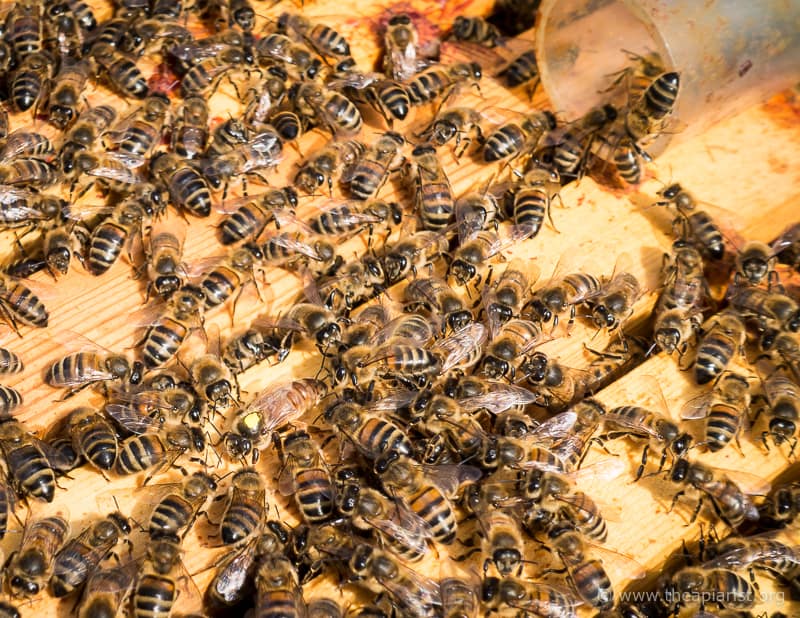
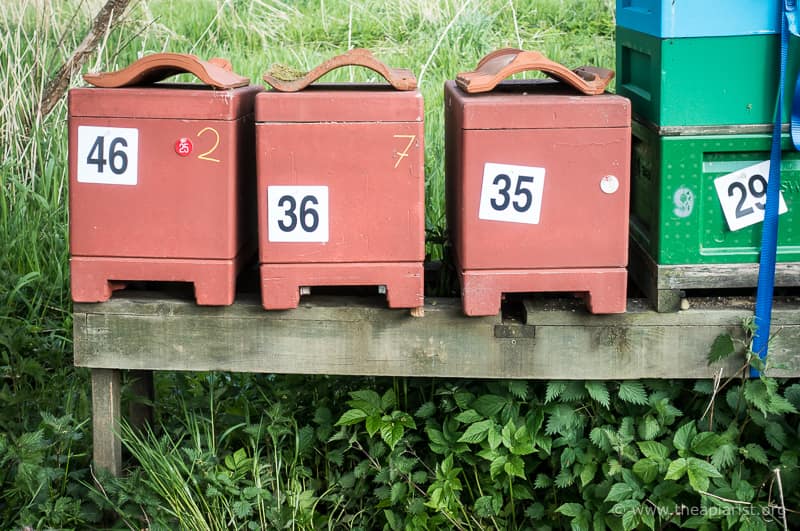
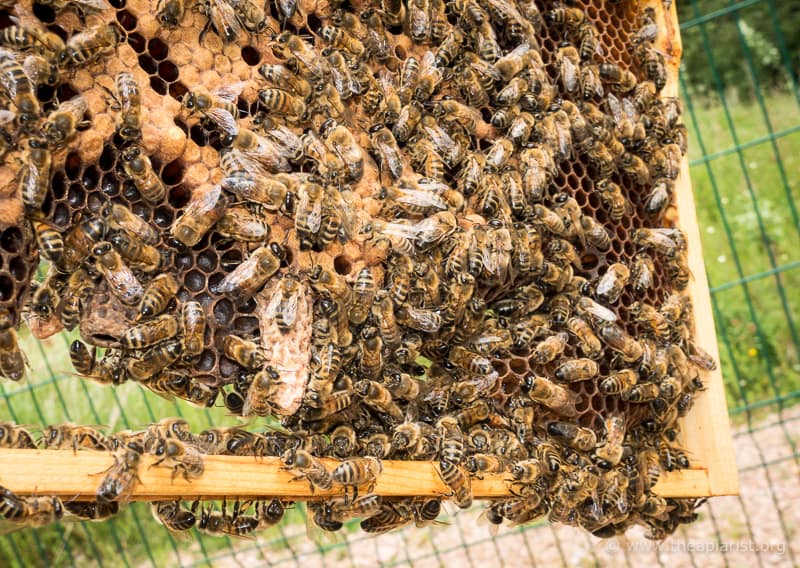
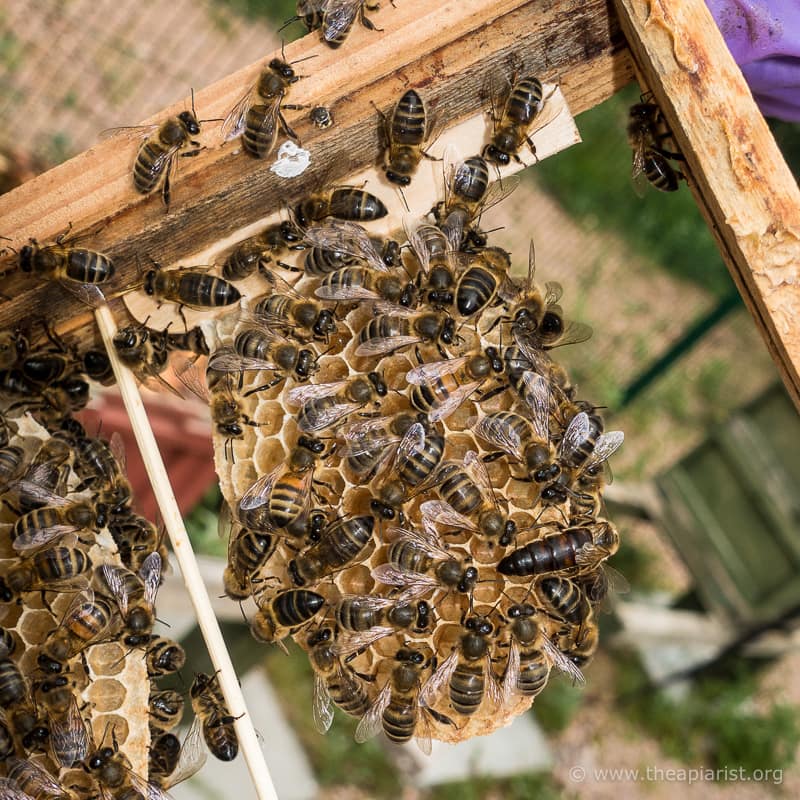
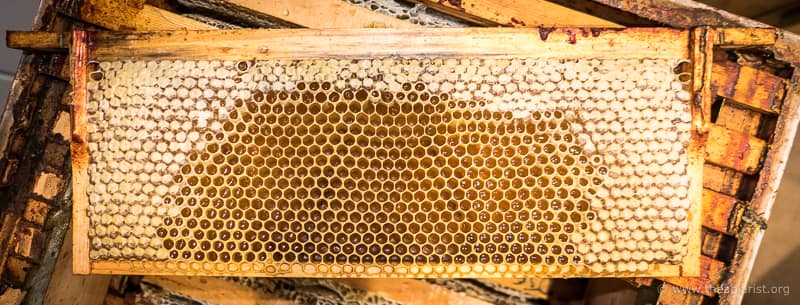
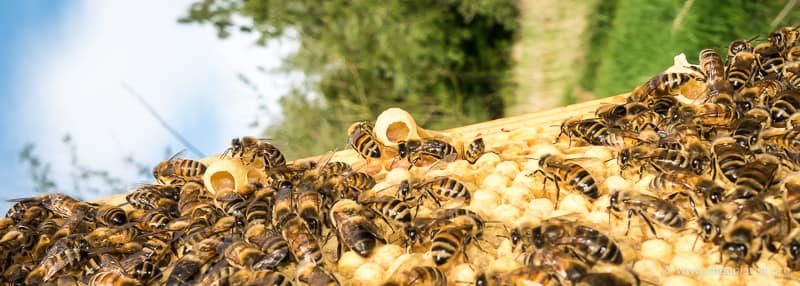
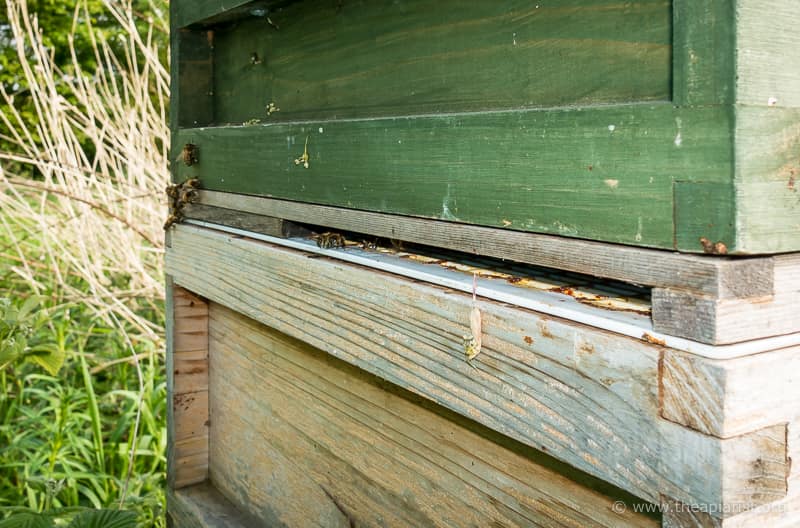
Join the discussion ...